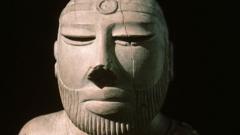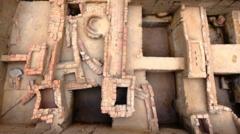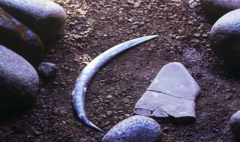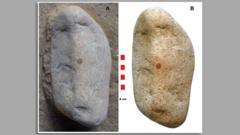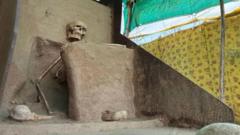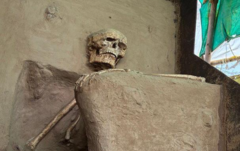Article Text:
Every week, Rajesh PN Rao, a computer scientist, receives emails from various people convinced they've deciphered the long-standing enigma of the ancient Indus script. These self-proclaimed codebreakers, including engineers, retirees, and other professionals primarily of Indian origin, assert they’ve solved the script that has remained a mystery for generations.
Interest in solving this script has recently intensified following Tamil Nadu's Chief Minister MK Stalin's announcement of a $1 million prize aimed at those who can crack this ancient code. The Indus Valley Civilization, which flourished around 5,300 years ago in what is today northwest India and Pakistan, is recognized as one of the earliest known urban societies. The society's sudden decline, devoid of clear indications of war, famine, or natural disasters, only adds to the intrigue surrounding its undeciphered script.
Despite decades of rigorous study by experts from various fields—linguistics to archaeology—attempts to unravel the secrets of the Indus script have met with little success. Some theories link the script to early Brahmi scripts and Sumerian languages, while others suggest it captures political or religious symbols. Yet, according to Rao, the reality is likely more straightforward: most of the writings, inscribed on stone seals, were used for trade rather than spiritual expression.
Deciphering is particularly challenging due to a limited number of inscriptions existing (approximately 4,000), the short nature of the texts (averaging around five signs), and the absence of extensive writings akin to the Rosetta Stone, which was pivotal in decoding Egyptian hieroglyphs.
Recent technological advancements, particularly in computer science, could be the key to cracking the script. Researchers like Nisha Yadav from Tata Institute of Fundamental Research have delved into applying machine learning techniques. By analyzing a digitized dataset, Yadav and her team have identified consistent patterns within the script. However, uncertainty remains as to whether these markings represent complete words or fragments.
Amidst the excitement, a significant study has emerged from Tamil Nadu, suggesting deep cultural connections between the Indus Valley and the region. Researchers K Rajan and R Sivananthan identified over 60% similarity between Indus signs and a large body of ancient graffiti in Tamil Nadu, hinting at a possible exchange of knowledge and culture.
Stalin’s reward announcement appears to be a strategic move to champion Tamil heritage, vying politically against the ruling BJP in Delhi. However, experts caution that true breakthroughs in decoding the Indus script may still be far off. Comprehensive databases of inscribed artefacts have been compiled, yet fundamental questions linger regarding the content and meaning behind the writing of the Indus people. As Yadav reflects, "What did the Indus people write? I wish we knew."
Every week, Rajesh PN Rao, a computer scientist, receives emails from various people convinced they've deciphered the long-standing enigma of the ancient Indus script. These self-proclaimed codebreakers, including engineers, retirees, and other professionals primarily of Indian origin, assert they’ve solved the script that has remained a mystery for generations.
Interest in solving this script has recently intensified following Tamil Nadu's Chief Minister MK Stalin's announcement of a $1 million prize aimed at those who can crack this ancient code. The Indus Valley Civilization, which flourished around 5,300 years ago in what is today northwest India and Pakistan, is recognized as one of the earliest known urban societies. The society's sudden decline, devoid of clear indications of war, famine, or natural disasters, only adds to the intrigue surrounding its undeciphered script.
Despite decades of rigorous study by experts from various fields—linguistics to archaeology—attempts to unravel the secrets of the Indus script have met with little success. Some theories link the script to early Brahmi scripts and Sumerian languages, while others suggest it captures political or religious symbols. Yet, according to Rao, the reality is likely more straightforward: most of the writings, inscribed on stone seals, were used for trade rather than spiritual expression.
Deciphering is particularly challenging due to a limited number of inscriptions existing (approximately 4,000), the short nature of the texts (averaging around five signs), and the absence of extensive writings akin to the Rosetta Stone, which was pivotal in decoding Egyptian hieroglyphs.
Recent technological advancements, particularly in computer science, could be the key to cracking the script. Researchers like Nisha Yadav from Tata Institute of Fundamental Research have delved into applying machine learning techniques. By analyzing a digitized dataset, Yadav and her team have identified consistent patterns within the script. However, uncertainty remains as to whether these markings represent complete words or fragments.
Amidst the excitement, a significant study has emerged from Tamil Nadu, suggesting deep cultural connections between the Indus Valley and the region. Researchers K Rajan and R Sivananthan identified over 60% similarity between Indus signs and a large body of ancient graffiti in Tamil Nadu, hinting at a possible exchange of knowledge and culture.
Stalin’s reward announcement appears to be a strategic move to champion Tamil heritage, vying politically against the ruling BJP in Delhi. However, experts caution that true breakthroughs in decoding the Indus script may still be far off. Comprehensive databases of inscribed artefacts have been compiled, yet fundamental questions linger regarding the content and meaning behind the writing of the Indus people. As Yadav reflects, "What did the Indus people write? I wish we knew."

